Can a Metabolite Be Metabolized Again
Metabolites are the intermediates and end products of all metabolic processes. An organism's metabolism is the sum of all biochemical operations information technology does. Metabolites are created by animals, plants, and microorganisms. They help in the actual functioning of organisms. Antibiotics, pigments, and other like substances are examples. Construction, catalytic activity, fuel, signalling, defence, and contact with other organisms are all activities that metabolites perform.
What are Metabolites?
Metabolite refers to the intermediate products created during metabolism and catalysed past various enzymes constitute naturally in cells. Antibiotics, pigments, and other similar substances are examples.
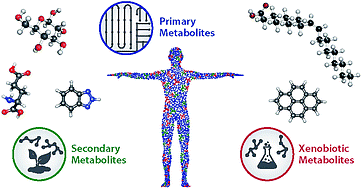
Types of Metabolites
Metabolite is a term that refers to tiny molecules. Structure, catalytic action, fuel, signalling, defence, and contact with other organisms are all activities that metabolites perform. Humans, plants, and microorganisms are the main producers of metabolites.
- Metabolites are intermediate and end products of cellular metabolism that are created during or at the end of the procedure.
- These include ethanol, glutamic acrid, aspartic acid, acetic acid, pigments, and antibiotics, to name a few.
- Artificially created metabolites tin be used in industrial and pharmaceutical applications such as the development of vaccines, antibiotics, isolating compounds for organic synthesis, and obtaining amino acids.
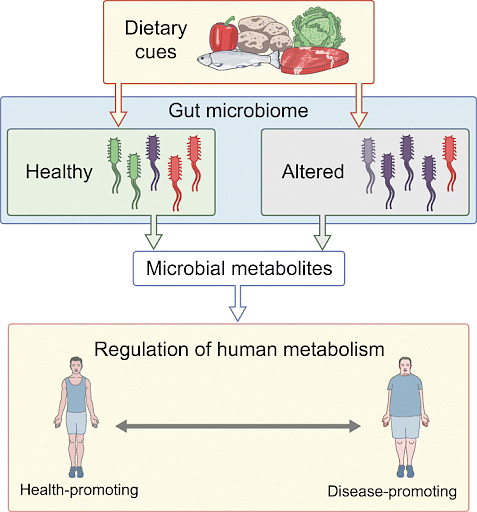
Functions of Metabolites
- Animals, plants, and bacteria all create metabolites.
- Metabolites serve a variety of purposes, including fuel, building blocks, signalling, enzyme stimulation and inhibition, catalytic activity throughout metabolism, defensive mechanisms, and interactions with other organisms such as bacteria, plants, and higher animals.
Plant Metabolites
In that location are two types of constitute metabolites:
- Primary Metabolites
- Secondary Metabolites
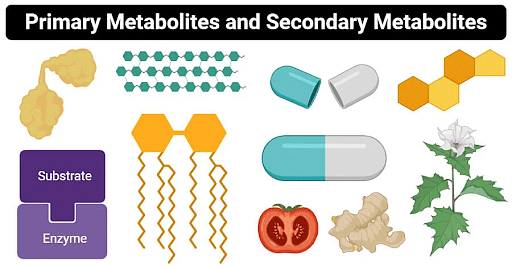
Plant Metabolites
Primary metabolites
Primary Metabolites play an of import role in the organism's growth, evolution, and reproduction. The major metabolite is oft referred to as a primal metabolite considering information technology is typically a cardinal component in maintaining normal physiological activities.
Primary metabolites are created as a outcome of energy metabolism during the growth phase and are thought to be necessary for optimal growth. Alcohols like ethanol, lactic acrid, and some amino acids are examples of principal metabolites.
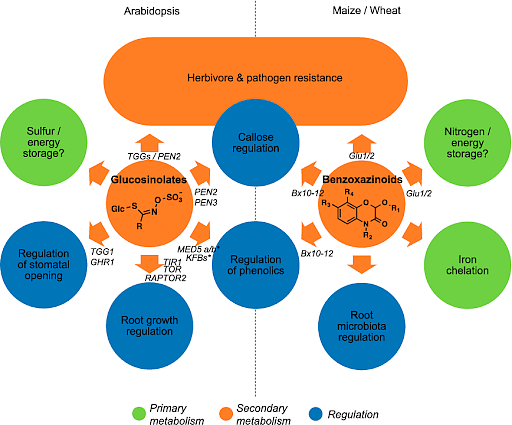
Types of Metabolites
Booze is ane of the most prevalent main metabolites used for big-scale synthesis in the field of industrial microbiology. Alcohol is specifically employed in fermentation processes that event in goods such as beer and vino.
Primary metabolites like amino acids, L-glutamate and 50-lysine, which are ofttimes used equally supplements, are besides obtained past the mass production of Corynebacteria glutamicum, a specific bacterial species.
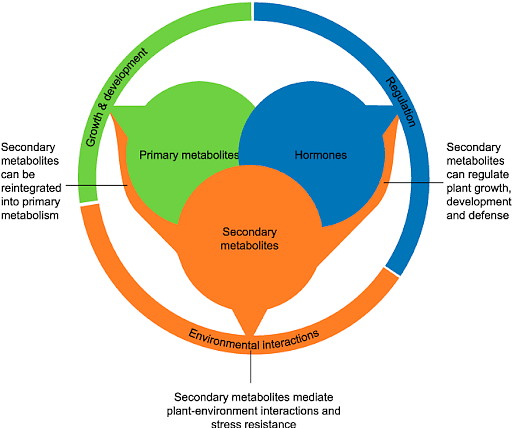
Metabolites and its Functions
Citric acid is another instance of a primary metabolite often employed in industrial microbiology. Aspergillus niger produces citric acid, which is one of the most extensively used components in nutrient product. It's also widely employed in the pharmaceutical and cosmetic industries.
Secondary metabolites
Secondary metabolites are organic substances that are created by altering primary metabolite synthases. Secondary metabolites, different main metabolites, practise not play a function in growth, development, or reproduction, and are normally created at the end of or near the stationary flow of growth.
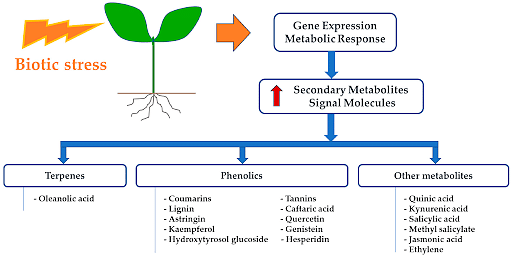
Secondary Metabolites
Many of the discovered secondary metabolites play a office in ecological function, including defence mechanisms, antibiotics, and pigment production. Atropine and antibiotics like erythromycin and bacitracin are examples of secondary metabolites important in industrial microbiology.
Atropine is a secondary metabolite generated from a diversity of plants that has clinical applications. Atropine is a competitive adversary for acetylcholine receptors, specifically muscarinic acetylcholine receptors, that can exist used to treat bradycardia.
Antibiotics like erythromycin and bacitracin are considered secondary metabolites also. Erythromycin, a widely used antibiotic produced from Saccharopolyspora erythraea, has a broad antibacterial range. It's mass-produced and oft taken past mouth.
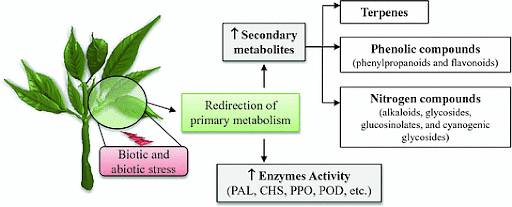
Secondary Metabolites Applications
Bacitracin, for example, is an antibiotic that is classed every bit a secondary metabolite. Bacitracin is an antibody produced from Bacillus subtilis leaner that is oft used equally a topical handling. Bacitracin is a nonribosomal peptide synthetase that can create peptides that are generated in nature. Even so, it is employed equally an antibiotic in the clinic.
Human Metabolites
A total of 2500 metabolites take been identified in humans. Prostaglandins, a group of lipids produced at the sites of tissue injury, infection and engaged in the treatment of injuries and illnesses, are in charge of managing processes such as claret flow, inflammation, blood clot formation, and labour induction.
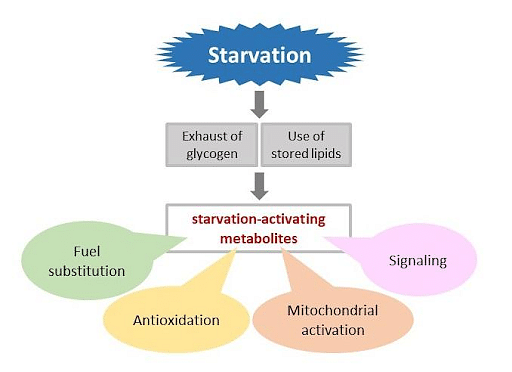
Metabolites in Human Beings
Arachidonic acid is a metabolite produced by prostaglandins. Both molecules take the aforementioned physical properties and belong to the aforementioned functional groups, which are linked through enzyme-catalyzed processes.

Metabolites in Biological Functions
Cholesterol creates steroid hormones, which are strong chemicals that assistance in the regulation of a variety of biological functions. When your body is physically or emotionally stressed, the adrenal glands release catecholamines, which are derived from the amino acid tyrosine.
Microbial Metabolites
Metabolites are tailored past organisms to influence cell procedures and pathways. Researchers are becoming increasingly aware of the possibility of using microbial metabolites as subatomic "bio probes" to investigate procedures and pathways at the cellular level and gain admission to previously unavailable data about how cells function.
While genomics, proteomics, and other atomic approaches provide a current view on the jail cell's "equipment," it is the apply of microbial metabolites as bio probes that is helpful in the understanding of working cells' confusing "programming."

Microbial Metabolites
Antimicrobial metabolites such as bafilomycin, fostriecin, geldanamycin, herbimycin, leptomycin, and tautomycin have all found use equally bio probes in cell biological science.
Similarly, a number of mycotoxins that were once idea to exist animal poisons and threats to human wellness take been rediscovered as important atomic reagents. Aflatoxin, cytochalasins, tentoxin, fumitremorgin C, and fumonisins are amidst them.

Types of Microbial Metabolites
There oasis't been many proteins or receptors discovered that don't have microbial metabolite competitors or agonists. This is similar to the important role that metabolites play in nature.
Because a microorganism's ability to manage its environment is critical to its survival, cell events that are essential to one life form volition become concentrated for another beast to regulate in support of its survival. Analysts have taken advantage of this meaning interaction at the microbiological level in gild to understand life at the atomic level.
Things to Think
- Metabolism is responsible for all chemical transformations that occur in living creatures' cells, and these transformations are required for an organism to remain alive, develop, and reproduce.
- Metabolites are the end products and intermediates produced past these metabolic activities. Principal metabolites are metabolites that have well-defined functions. They are well-known to serve important functions in normal physiological processes.
- Primary metabolites are biomolecules that have a directly role in an organism's metabolic activities, which are necessary for its growth, development, and reproduction.
- Carbohydrates, proteins, lipids, hormones, and nucleic acid etc. are examples of chief metabolites.
- During metabolism, plants, fungi, and some other microbes create biomolecules that are not directly engaged in physiological activities simply are essential to the organisms. These are called secondary metabolites.
- Pigments, antibiotics, steroids, essential oils, phenolics, alkaloids, and other secondary metabolites are examples of Secondary metabolites.
- Primary and secondary metabolites differ in that primary metabolites are straight involved in an organism's physiological activities, whereas secondary metabolites are not.
- Central metabolites are primary metabolites that are produced during trophophase. Secondary metabolites, also known as specialised metabolites, are generated during the idiophase.
Sample Questions
Ques. What are Metabolites? (two marks)
Ans. Metabolite refers to the intermediate products created during metabolism and catalysed by various enzymes found naturally in cells. They are divided into 2 categories: primary and secondary. The chief metabolites are required for microorganisms to grow properly, whereas secondary metabolites are created during the stationary stage of growth and are not involved in the organisms' growth, evolution, or reproduction. Antibiotics, pigments, and other similar substances are examples. Metabolite is a term that refers to tiny molecules. Structure, catalytic activity, fuel, signalling, defence force, and contact with other organisms are all activities that metabolites perform.
Humans, plants, and microorganisms are the main producers of metabolites.
Ques. What is Secondary Metabolism? Requite Examples of Secondary Metabolites. Highlight Some Important Points nearly Metabolites. (2 marks)
Ans. Secondary metabolism refers to the metabolic pathways and metabolites that are created merely are non required for the survival of organisms. Metabolites assist plants in their development and growth, too every bit promoting primary metabolism. Specialized metabolism is the term for this. Steroids, antibiotics, phenolics, and pigments are only a few examples of secondary metabolites.
Some of the most important features of metabolites are equally follows: -
- Metabolites are the metabolic process' intermediate terminate products.
- The primary metabolites are required for bacteria to abound properly.
- Secondary metabolites are produced during the stationary phase of growth and are not involved in the organisms' growth, development, or reproduction.
- The metabolites could be utilised to brand antibiotics, vaccines, isolate compounds for organic synthesis and extract amino acids in the pharmaceutical industry.
Ques. Country the Part of Secondary Metabolites? (2 marks)
Ans. Secondary Metabolites' Functions are as follows
- These chemicals operate as competing weapons confronting other chancy creatures such as animals, plants, insects, and microbes.
- Because aluminium is particularly poisonous to plants, certain secondary metabolites assistance in the development of aluminium resistance mechanisms.
- Stimulants such as nicotine or caffeine are employed as secondary metabolites.
- Some alkaloids have therapeutic characteristics and are used as hurting relievers or treatments for a diversity of ailments.
Ques. Country the role of Primary Metabolites? (two marks)
Ans. Chief metabolites, equally we all know, are directly involved in vital physiological processes in the body and are required for a diversity of primal tasks. The following are a few of them:
- Carbohydrates and lipids are primary metabolites that supply energy for physical activity.
- Proteins are essential fundamental metabolites for bodily tissue and cell growth, repair, and maintenance.
- Enzymes aid in the catalysis of all metabolic reactions in the body.
- Other critical primary metabolites include nucleic acids, which are required for the manual of genetic data to future generations.
- Lipids are the structural ingredients that makeup cells and organelles. It also gives you twice as much energy as carbohydrates or proteins.
- In the absence of main metabolites, an organism cannot exist.
Ques. What is meant past the 3rd structure of proteins? (ii marks)
Ans. The helical polypeptide molecule may fold on itself and assume a complex but specific class-spherical, rod-similar or any grade in between these. These geometrical shapes are known as tertiary (three°) structures of protein molecules. The coils and folds of the polypeptide molecules are so arranged as to hide the non-polar amino acid bondage within and to betrayal the polar side chains. The tertiary structure of a protein brings distant amino acid side chains nearer to form agile sites of enzymatic proteins. The tertiary structure is maintained by weak bonds such every bit hydrogen, ionic, disulphide and hydrophilic – hydrophobic bonds, formed between one office of a polypeptide and some other. This construction is easily disrupted by pH, temperature and chemicals stopping the office of proteins.
Ques. What are the ii types of Metabolites? (2 marks)
Ans. In that location are two types of Metabolites:
Primary metabolites
- Key office in growth, evolution & reproduction
- Formed during growth phase every bit a upshot of energy metabolism
- Amino acids, nucleotides, acerb acid, lactic acid, vitamins
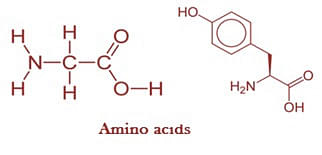
Secondary metabolites
- No function in growth, development & reproduction
- Formed towards end of growth stage
- Ecological importance (drugs, toxins, pigments etc)
- Rubber, gums, cellulose, carotenoids, morphine, erythromycin

Ques. Proteins have a chief structure. If you are given a method to know which amino acid is at either of 2 termini (ends) of a poly peptide, can yous connect this information to the purity or homogeneity of a protein? (2 marks)
Ans. There are several methods provided by several scientists to find out the sequence of amino acids. Frederick Sanger proposed Sanger's reagent to know the amino acid sequence in a polypeptide chain.
Sanger used one-fluoro 2, 4 dinitrobenzene (FD NB) to make up one's mind insulin structure. FDNB specifically binds with N-last amino acrid to grade a dinitrophenyl (DNP) derivative of peptide. This DNP- derivative peptide tin can be identified past chromatography. The identified sequence of amino acids shows the homogeneity of a poly peptide molecule.
Ques. Describe the important properties of enzymes. (ii marks)
Ans. The important properties of enzymes are as follows:
(i) The enzymes are generally proteins that are high molecular weight circuitous globular proteins. They can acquaintance with non-protein substances for their action.
(ii) The enzymes exercise not start a chemical reaction but only accelerate information technology. They combine temporarily with the substrate molecules and are not consumed or inverse permanently in the reaction which they catalyse.
(iii) The enzyme controlled reactions are reversible.
(4) The enzymes are specific in action. An enzyme catalyses only a particular kind of reaction or acts on a particular substrate only.
(v) The enzymes are thermolabile i.e., estrus sensitive and can function best at an optimum temperature. Similarly, enzymes show maximum activity at optimum pH.
(half dozen) The enzymes are inactivated by poisons and radiation.
Ques. Find out and make a listing of proteins used as therapeutic agents. Find other applications of proteins. (2 marks)
Ans. Proteins used equally therapeutic agents are thrombin, fibrinogen, enkephalins, antigens, antibodies, streptokinase, protein tyrosine kinase, diastase, renin, insulin, oxytocin, vasopressin etc. Proteins are also used in cosmetics, dairy industries, textile industries, research techniques, biological buffers etc.
Ques. Tin can you describe what happens when milk is converted into curd or yoghurt, from your understanding of proteins? (2 marks)
Ans. Milk is converted into curd or yoghurt due to the denaturation of proteins. In denaturation, disruption of bonds that maintains secondary and tertiary structure leads to the conversion of globular proteins into fibrous proteins. This involves a change in the physical, chemical and biological properties of protein molecules.
Tin you attempt edifice models of biomolecules using commercially available atomic models (Ball and stick models)? (2 marks)
Ans. Yes, models of biomolecules can be prepared using commercially available atomic models.
Ball and stick models and space-filling models are 3D or spatial molecular models which serve to display the construction of chemical products and substances or biomolecules. With ball and stick models, the centres of the atoms are continued by straight lines which represent the covalent bonds. Double and triple bonds are often represented by springs which course curved connections between the assurance. The bail angles and bond lengths reverberate the bodily relationships, while the space occupied by the atoms is either not represented at all or only denoted substantially past the relative sizes of the spheres.
Ques. Attempt titrating an amino acrid against a weak base of operations and notice the number of dissociating (ionizable) functional groups in the amino acid. (2 marks)
Ans. The beingness of different ionic forms of amino acids can be easily understood past the titration curves. The number of dissociating functional groups is 1 in the example of neutral and basic amino acids and two in the case of acidic amino acids.
solorzanojoyinewerhat.blogspot.com
Source: https://collegedunia.com/exams/metabolites-primary-secondary-types-examples-biology-articleid-1272
Postar um comentário for "Can a Metabolite Be Metabolized Again"